It’s easy to set objectives for your company, but having an organized system for tracking how you are performing against them can be a bit harder. In this article, we will talk about the OKR Methodology and how it can help your company optimize, track, and analyze your digital marketing strategies.
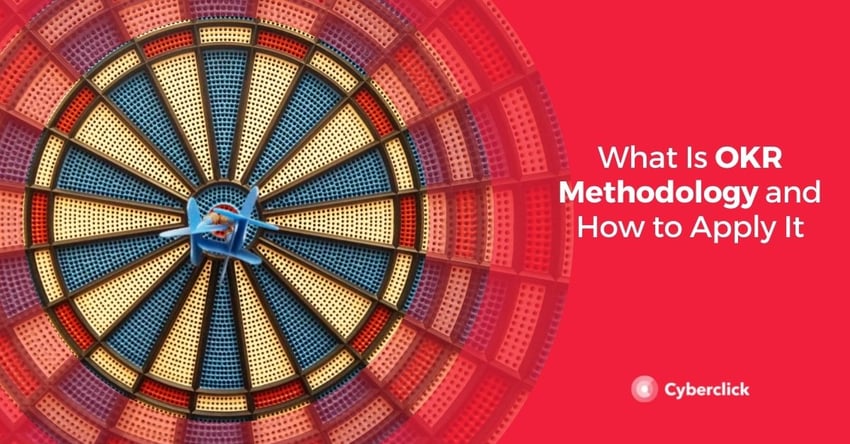
What is the OKR Methodology?
The acronym OKR stands for "Objectives and Key Results".
It is a methodology that is applied to align an entire team at the organizational level. The idea behind it is that it creates a centralized approach so that everyone can work towards the same goals. The OKR Methodology is used by several of the world’s largest companies, including Google, Amazon, LinkedIn, Accenture, and Netflix.
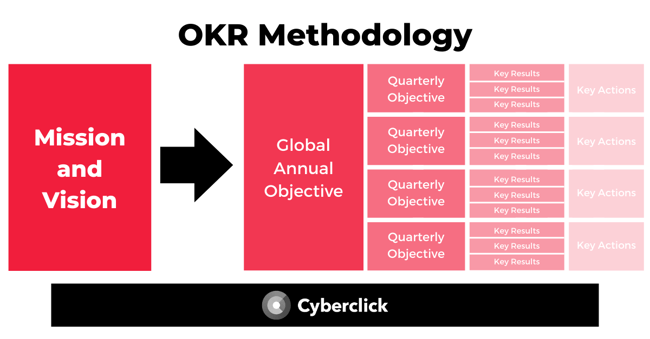
4 Steps to Implement the OKR Methodology
To be able to implement the OKR Methodology, it is essential to understand how it works and how it is structured. Here are our four tips to ensure you get the most out of it.
1. Global Annual Objective
The first step is to define a global annual objective. Think about where you want your company to be next year. What are the essential achievements that will lead your company in the right direction and allow it to continue to grow and succeed? Your objective should be derived from the company’s vision and mission.
2. Objectives
Once the global annual objective is established, you must define quarterly objectives. These will be vital in leading you as they will serve as smaller, incremental objectives that work towards the larger goal for the year. Aim for a maximum of three to four goals per quarter. Rather than being centered around metrics, these goals should be more inspiring in nature.
Setting goals is not easy. We recommend brainstorming with your team to come up with multiple objectives, then prioritizing the most important ones. You could try using a stacked ranking technique or ICE scoring system to prioritize your objectives.
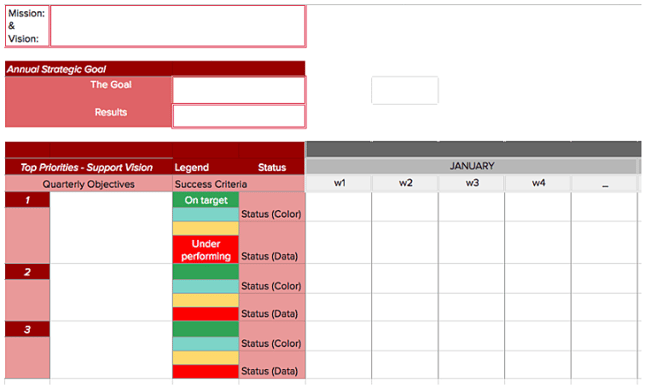
This would define your quarterly objectives in the OKR template.
3. Key Results
The third step is to define the key results. Your key results will help you determine if you are going in the right direction towards your goals. Key results must contain KPI-based metrics.
4. Key Actions
As the last step, you must assign key actions for each key result. The key actions are activities that will lead you closer to your key results–and eventually, your overall goal.
What to Avoid When Implementing the OKR Methodology
- Setting too many objectives or key results
- Having key results that are not measurable and quantitative
- Creating objectives that are not time-bound
- Confusing tasks with key results
OKR Methodology Example
Global Annual Objective: Increase visibility and improve brand positioning.
Objective 1: Improve SEO
- Key Result: Organic web traffic above 50,000 visits per month
- Key Actions: Position 3 articles with keywords that generate a high number or searches
- Key Result: Increase the website loading speed from 7 seconds to 4 seconds
- Key Actions: Compress the size of all the images in the blog
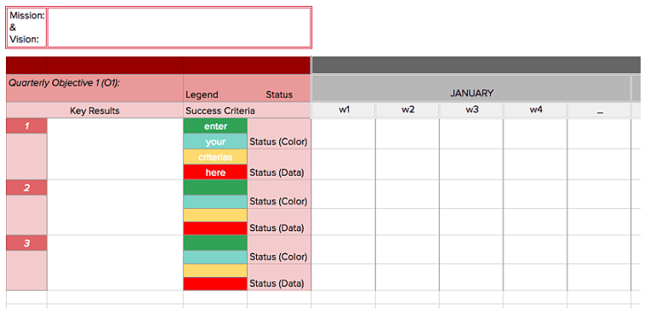
You can follow up weekly with your quarterly objectives by filling in the template. Remember that each excel sheet monitors a different objective.
Objective 2: Improve Presence and Engagement in Social Networks
- Key Result: Reach 5,000 subscribers on YouTube
- Key Actions: Periodically launch a newsletter to the contact base with the content from the channel
- Key Actions: Produce and share videos with more practical and less theoretical content
- Key Result: Increase engagement on Facebook page by 10% monthly
- Key Actions: Share more content
- Key Actions: Vary the content formats
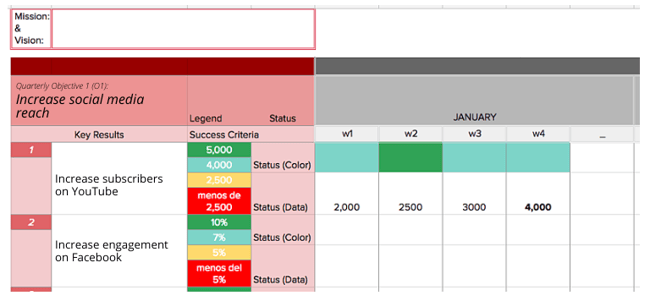
Advantages of the OKR Methodology
Implementing this methodology brings many benefits, including:
- Facilitating teamwork
- Centralizing and focusing the efforts of your team
- Achieving your objectives in an organized and systematic way
CEO y cofundador de Cyberclick. Cuenta con más de 25 años de experiencia en el mundo online. Es ingeniero y cursó un programa de Entrepreneurship en MIT, Massachusetts Institute of Technology. En 2012 fue nombrado uno de los 20 emprendedores más influyentes en España, menores de 40 años, según la Global Entrepreneurship Week 2012 e IESE. Autor de "La empresa más feliz del mundo" y "Diario de un Millennial".
CEO and co-founder of Cyberclick. David Tomas has more than 25 years of experience in the online world. He is an engineer and completed an Entrepreneurship program at MIT, Massachusetts Institute of Technology. In 2012 he was named one of the 20 most influential entrepreneurs in Spain, under the age of 40, according to Global Entrepreneurship Week 2012 and IESE. Author of "The Happiest Company in the World" and "Diary of a Millennial".

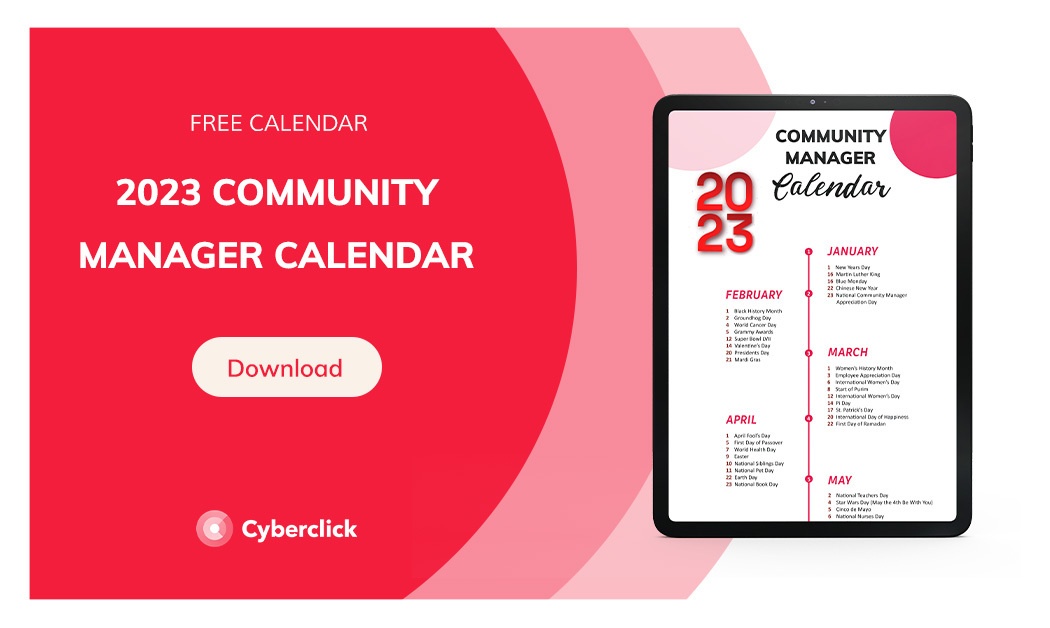




Leave your comment and join the conversation